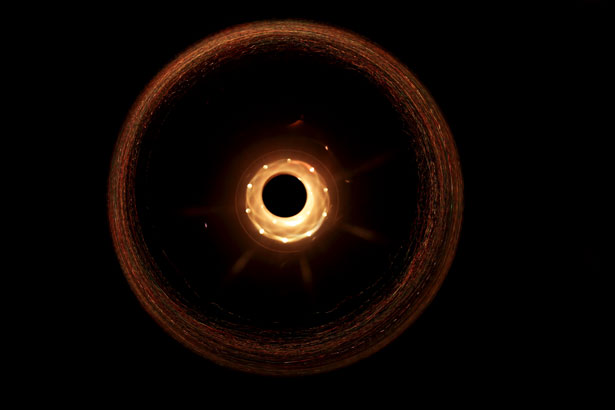Black holes are considered by many scientists to be the cradle of the universe, as they are theorized to have formed very soon after the Big Bang occurred. But how did they actually form? Read on to find out more about the first black hole and its creation process!
The Big Bang and Inflation
In Albert Einstein’s theory of general relativity, our universe began with a singularity—or an event in which space and time expanded rapidly from an infinitely small point in a fraction of a second. Scientists believe that around 13.8 billion years ago, everything we can see in our universe was contained within one infinitesimally small point, but as it continued to expand rapidly it changed into what we know today as space-time and energy. But many people have wondered…what came before? What triggered such a massive explosion? And how did it all begin? While scientists are still debating these questions, they do have some ideas about what happened during The Big Bang and how inflation led up to it. Here’s their best guess so far.
When our universe first sprang into being, there were no galaxies or stars or planets. Everything we could possibly imagine consisted of dense hot plasma filled with protons and neutrons in equal parts (this is also known as a primordial soup). As matter started to cool down after several hundred thousand years, protons combined together through electrostatic attraction to form hydrogen atoms.
Dark Matter, Dark Energy & Dark Gravity
What Are Dark Forces and Why Does Physics Need Them? : Scientists say that there’s a lot we don’t know about what makes up most of our universe. About 70 percent of it—including dark matter and dark energy—is made up of things we can’t even detect, only theorize about. We do know that galaxies cluster together as gravity pulls them toward something, but all of our current theories predict they should be moving faster than they are. The fact that they aren’t suggests that some kind of invisible force is holding them back. That force is called dark matter; scientists think it might actually make up more than 90 percent of everything in our universe! And then there’s dark energy, which acts like anti-gravity by pushing galaxies apart from each other. Astronomers think that dark energy could have been responsible for accelerating the expansion of our universe after its initial big bang. So how did these forces get their names? Well, no one knows exactly how much stuff is out there in space—but whatever it is, we call it dark because we can’t see any light coming from it!
Gravitational Lensing
One of Albert Einstein’s predictions when he created his general theory of relativity was that gravity could bend light. And in 1919, astronomer Sir Arthur Eddington found proof. When a star passed between Earth and another bright source—in Eddington’s case, a distant quasar—it bent and magnified its light, showing that gravity was real. This phenomenon is known as gravitational lensing. The effect can be used to study black holes, which are so dense they warp space-time around them. Even more impressive, scientists have recently discovered evidence for multiple black holes at our galaxy’s center! The first one was discovered in 2018 by an international team led by researchers from MIT and Caltech (the same team behind LIGO). It’s estimated to be about 100 times heavier than our Sun and have a mass of about 1 million suns. In other words, it’s huge. But what makes it even more interesting is how quickly it formed—within just 10 years after the Big Bang, which occurred 13.8 billion years ago! By contrast, most stars take billions of years to form. Astronomers believe there may be dozens or even hundreds of similar objects lurking at our galaxy’s core.
Evidence for Black Holes
There are many different theories about how black holes were formed. However, it’s commonly accepted that supernovae are one source for black holes. When a massive star dies, it collapses and explodes as a supernova, creating an extremely dense object at its core. This is essentially what we think of as a black hole today. But in order to create something like a black hole, there has to be enough matter packed into such a small space. In fact, there needs to be more than three times as much matter than exists in our sun! That’s why scientists believe that only stars with masses 10 or more times greater than our sun can collapse under their own gravity to form black holes. For example, when Betelgeuse (the second-brightest star in Orion) goes supernova, it will become a black hole. And if you want to know where you can find some good candidates for future black holes…look no further than Messier 4.
![]()
